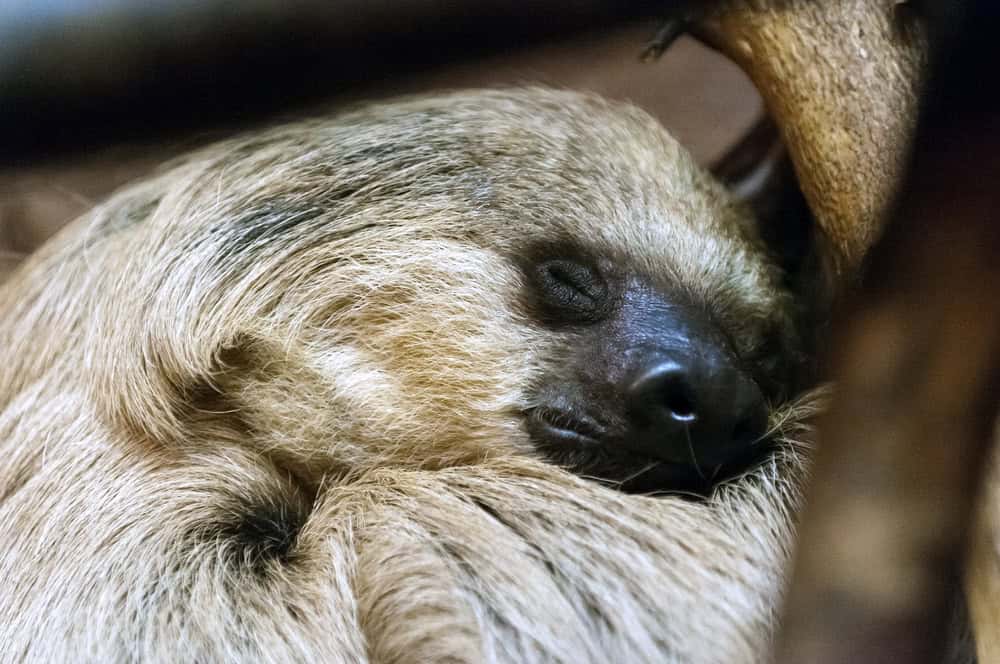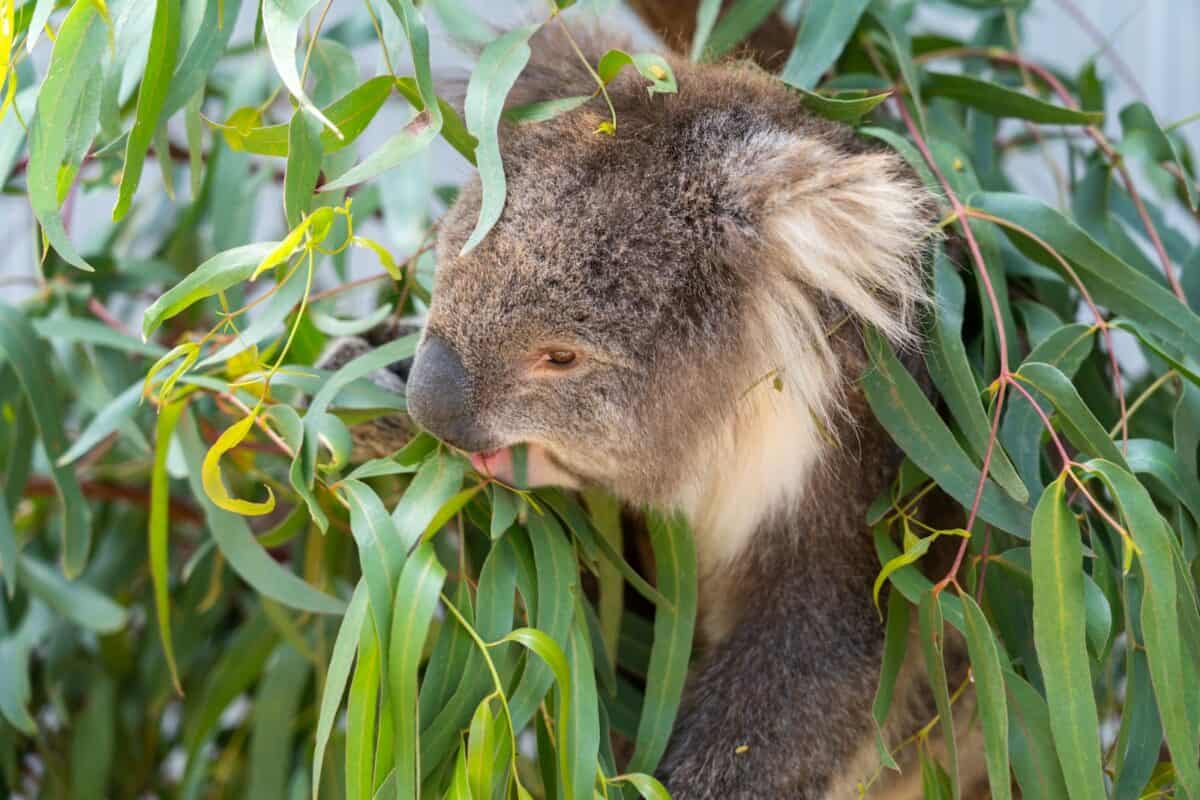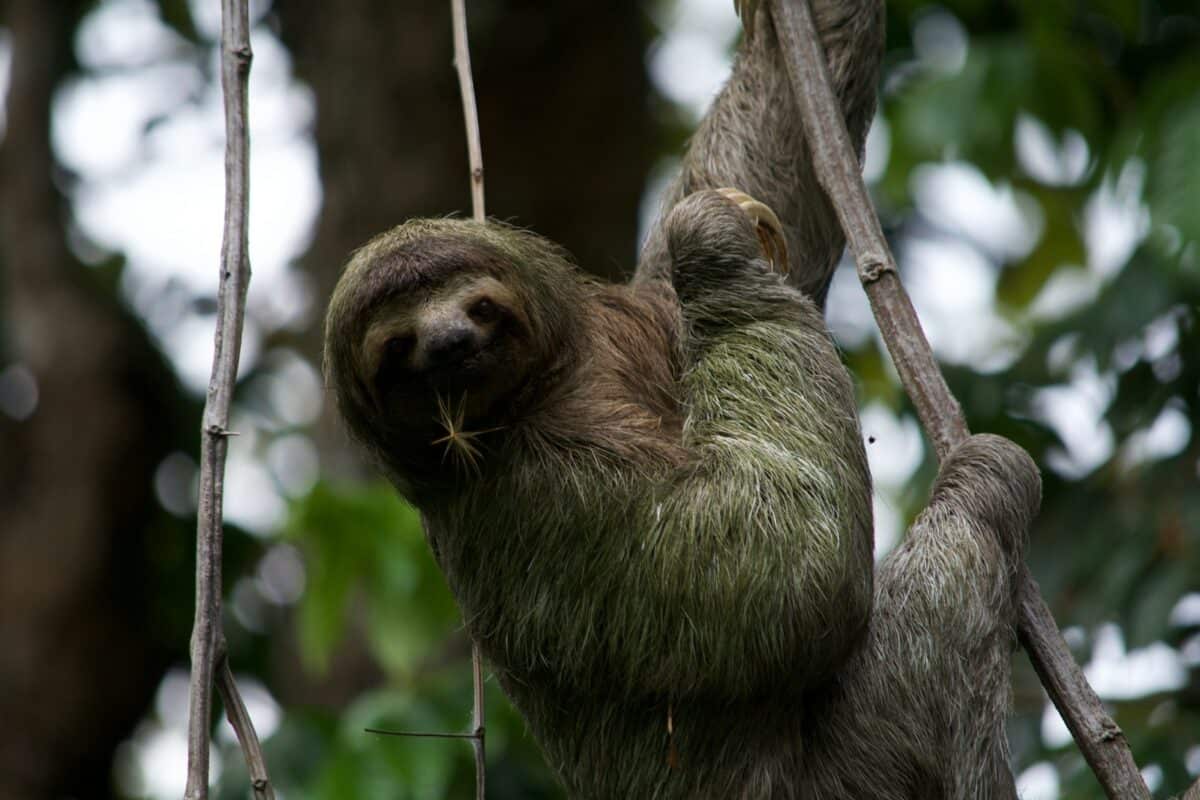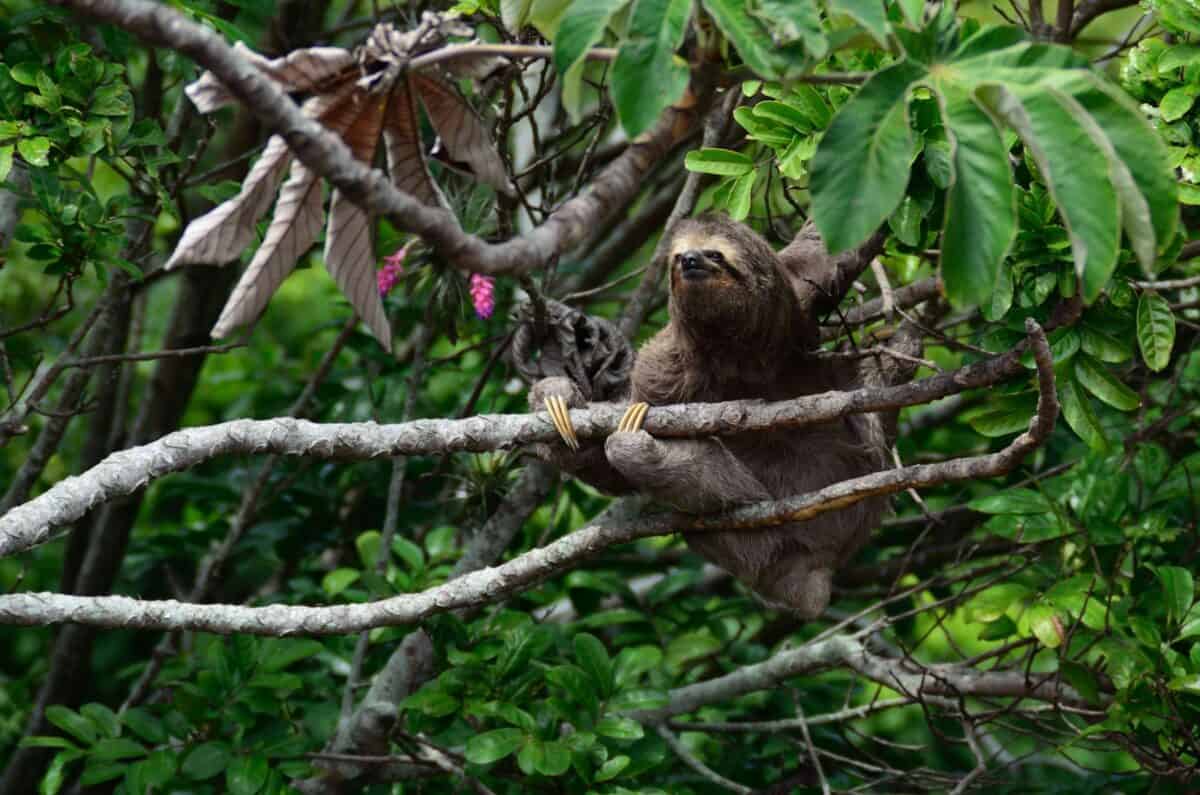When it comes to the animal kingdom’s champion sleepers, two creatures frequently compete for the crown: koalas and sloths. While both animals are renowned for their sedentary lifestyles and lengthy sleeping habits, koalas actually surpass sloths in total sleep time, despite the latter’s reputation for extreme laziness. This fascinating comparison reveals much about animal adaptations, survival strategies, and the evolutionary reasons behind excessive sleep patterns. In this article, we’ll explore why koalas need more sleep than even the notoriously sluggish sloth, and what this tells us about these unique mammals and their specialized ecological niches.
The Sleep Champions: Koalas’ Impressive Snooze Statistics

Koalas (Phascolarctos cinereus) are unquestionably among the sleepiest creatures on Earth, spending an astonishing 18-22 hours per day in slumber. This remarkable statistic places them at the top of the mammalian sleep hierarchy. During scientific studies monitoring koala behavior, researchers have documented individuals sleeping up to 22 hours in a single 24-hour period. Even on their most active days, koalas rarely remain awake for more than 6 hours. This extreme sleep pattern exceeds that of almost every other mammal, including humans (who average 8 hours), cats (who sleep about 12-16 hours), and yes—even the famously lethargic sloths.
Sloth Sleep Patterns: Not as Lazy as Their Reputation

Despite their reputation as the animal kingdom’s laziest members, sloths actually sleep less than koalas. Three-toed sloths (Bradypus species) typically sleep about 14-16 hours daily in the wild, while two-toed sloths (Choloepus species) average about 16-18 hours of sleep. This still represents a substantial portion of their day spent in slumber, but falls short of the koala’s record. Interestingly, captive sloths sometimes sleep more than their wild counterparts, suggesting that their sleep patterns may be influenced by environmental factors and the need to remain vigilant against predators in their natural habitats. The sloth’s reputation for extreme sleepiness may stem more from their incredibly slow movements when awake rather than their actual sleep duration.
The Eucalyptus Diet: Why Koalas Need Extra Sleep

The primary reason koalas sleep so extensively relates directly to their highly specialized diet of eucalyptus leaves. These leaves, while abundant in the koala’s native Australia, present significant challenges as a food source. Eucalyptus foliage contains high levels of toxic compounds including phenols, terpenes, and cyanide-producing glycosides that would poison most other mammals. Additionally, these leaves offer very little nutritional value and are exceptionally difficult to digest. A koala’s digestive system must work extraordinarily hard to extract minimal nutrition from this toxic diet, requiring substantial energy. Sleep becomes an essential strategy for conserving energy while their digestive system laboriously processes this challenging food source. By remaining inactive for the majority of the day, koalas minimize their energy expenditure, allowing more resources to be dedicated to the energy-intensive detoxification process.
Metabolic Reasons Behind Excessive Sleep

Koalas possess one of the lowest metabolic rates among mammals, approximately 50% of what would be expected for an animal of their size. This sluggish metabolism is a direct adaptation to their nutrient-poor diet. The extensive sleep helps maintain this low metabolic state, minimizing energy requirements. Scientists have calculated that a koala’s daily energy needs are so limited that they require only about 360 kilojoules of energy per kilogram of body weight—far lower than most mammals. This metabolic adaptation is crucial for survival on their eucalyptus diet, which provides minimal caloric return despite the significant effort required to digest it. In comparison, sloths also have slow metabolisms, but their more varied diet of leaves, fruits, and occasional insects offers greater nutritional value, requiring somewhat less compensatory sleep.
Brain Function During Koala Sleep
Research into koala brain activity has revealed fascinating insights about their sleep quality. Koalas experience a high proportion of REM (rapid eye movement) sleep compared to many other mammals. This deeper, more restorative sleep state may be critical for their brain’s management of toxin processing. Scientists have theorized that the koala’s brain requires significant downtime to manage the neurological impacts of constantly processing eucalyptus toxins. During sleep, their brains may be actively working to prevent neurotoxic effects while their conscious brain functions are minimized. This specialized sleep adaptation represents a remarkable evolutionary solution to the challenges of their dietary niche, allowing koalas to safely consume a food source few other animals can tolerate.
Sloths’ Energy Conservation Strategy

While sloths sleep less than koalas, their overall energy conservation strategy is no less impressive. Sloths move at extraordinarily slow speeds—averaging just 0.15 miles per hour—even when fully awake. This perpetual slow motion represents an alternative approach to energy conservation that complements their sleep patterns. Their metabolic rates are among the slowest recorded for mammals of their size, operating at approximately 40-45% of expected levels. Sloths maintain low body temperatures between 74-92°F (24-33°C), significantly lower than most mammals. This combination of slow movement, low body temperature, and moderate sleep duration represents a different evolutionary solution to energy conservation compared to the koala’s strategy of extreme sleep. Sloths effectively remain in an energy-saving mode even while technically awake, whereas koalas make a clearer distinction between their brief active periods and extensive sleep.
Sleep Environments and Positions

The sleep environments and positions of these two sleepy mammals reflect their different evolutionary adaptations. Koalas sleep in the forks of eucalyptus trees, often wedging themselves securely into place to prevent falls during their lengthy slumber periods. Their powerful limbs and specialized claws allow them to remain safely anchored despite being unconscious most of the day. In contrast, sloths typically sleep hanging upside down from tree branches, their specialized curved claws locking them securely in place with minimal muscular effort. This unique sleeping position allows sloths to remain hidden from predators while sleeping, as their algae-covered fur blends with the surrounding foliage. Both animals have evolved sleep positions that maximize safety while minimizing energy expenditure, though they accomplish this through noticeably different physical adaptations.
Quality vs. Quantity of Sleep

When comparing koala and sloth sleep, scientists consider not just duration but quality. Research suggests that koalas experience more fragmented sleep than sloths, frequently waking briefly to change position or even eat. These short wakeful periods are typically followed by immediate returns to sleep. Sloths, while sleeping fewer total hours, often experience more consolidated sleep periods with fewer interruptions. This difference may reflect their respective ecological niches—koalas must process toxins continuously and thus may need to regulate their digestive load through periodic waking, while sloths face fewer dietary challenges but greater predation risks, making longer uninterrupted sleep potentially dangerous. The quality-versus-quantity comparison reveals that these animals have evolved different sleep strategies to address their unique physiological and environmental challenges.
Evolutionary Advantages of Extreme Sleep

The extensive sleep patterns of both koalas and sloths demonstrate how evolution can produce similar solutions to different ecological challenges. For koalas, extreme sleep represents an adaptation to a toxic, low-nutrition diet in a habitat with few predators. Their specialized ecological niche in Australian eucalyptus forests allows them to exploit an abundant food source that few competitors can utilize, but only by adopting an extraordinarily inactive lifestyle. Sloths, though sleeping less, evolved in the predator-rich environments of Central and South American rainforests where their slow movement and camouflage provide essential protection. Both species demonstrate how sleep can be leveraged as an evolutionary strategy beyond simple rest—becoming a cornerstone of their metabolic and survival adaptations. These extreme sleep adaptations have allowed both animals to thrive in their respective environments for millions of years despite substantial ecological challenges.
Climate and Habitat Influences on Sleep Pattern

Environmental factors significantly influence the sleep patterns of both koalas and sloths. Koalas inhabit various Australian environments ranging from coastal islands to inland forests, with sleep patterns showing slight regional variations. In hotter climates, koalas may sleep even more to conserve water and energy during high temperatures. Seasonal variations also exist, with koalas in cooler southern regions sometimes showing slightly different sleep patterns compared to their northern counterparts. Sloths, as tropical rainforest dwellers, experience more consistent temperatures but must adapt to seasonal rainfall patterns. During rainy seasons, sloths have been observed sleeping slightly more, possibly to conserve energy when movement through wet canopies requires additional effort. These habitat influences demonstrate how sleep patterns in both species remain somewhat flexible and responsive to environmental conditions despite their genetic programming toward extensive rest.
Threats to Natural Sleep Patterns

Both koalas and sloths face increasing threats to their specialized sleep requirements due to human activity. Habitat fragmentation forces koalas to travel greater distances between suitable eucalyptus trees, reducing available sleep time and increasing energy expenditure. Urban development brings noise pollution, artificial light, and other disturbances that can interrupt the koala’s sensitive sleep cycles. Similarly, deforestation in Central and South America creates challenges for sloths, forcing them to navigate gaps in the canopy and potentially exposing them to predators during periods typically reserved for sleep. Climate change represents another significant threat, as shifting temperature patterns and increased extreme weather events can disrupt the carefully balanced energy budgets these animals maintain through sleep. Conservation efforts must consider these animals’ unique sleep requirements as essential components of their ecological needs.
Other Notably Sleepy Animals in Comparison

While koalas and sloths stand out for their exceptional sleep duration, several other mammals also dedicate substantial time to slumber. Giant armadillos sleep approximately 18-20 hours daily, nearly matching koalas. Opossums average 18-20 hours of sleep, while bats typically sleep 19-20 hours each day. Lions, despite their fearsome reputation, sleep 16-20 hours daily. Python snakes average 18 hours of sleep. Among primates, owl monkeys are the sleepiest, averaging 17 hours daily. These comparative sleep patterns reveal that extensive sleep has evolved independently multiple times across different animal lineages, usually correlating with specific dietary adaptations, predator avoidance strategies, or environmental niches. The koala remains exceptional even among these sleepy species due to the combination of sleep duration and their unique toxic diet, representing perhaps the most extreme example of sleep as an evolutionary adaptation.
The comparison between koalas and sloths reveals fascinating insights into how different animals have evolved extreme sleep strategies to overcome unique ecological challenges. Koalas, with their impressive 18-22 hours of daily sleep, have indeed earned the title of sleep champions over the still remarkably dormant sloths with their 14-18 hours. This sleep disparity primarily stems from the koala’s extraordinarily challenging eucalyptus diet, which requires extensive energy conservation to process toxic compounds while extracting minimal nutrition. Both animals demonstrate how sleep can transcend its basic restorative function to become a central survival strategy, allowing these specialized mammals to thrive in ecological niches that would be inaccessible with more typical mammalian activity levels. As we continue to study these sleep adaptations, we gain not only greater appreciation for these unique animals but also potential insights into sleep’s fundamental biological importance across all species, including humans.
- The Tallest Land Animal on Earth Has a Neck That Works Like a Crane - August 18, 2025
- 14 Cats That Can Survive Harsh Winter Climates - August 18, 2025
- The Best Deserts for Spotting Camels in the Wild - August 18, 2025

